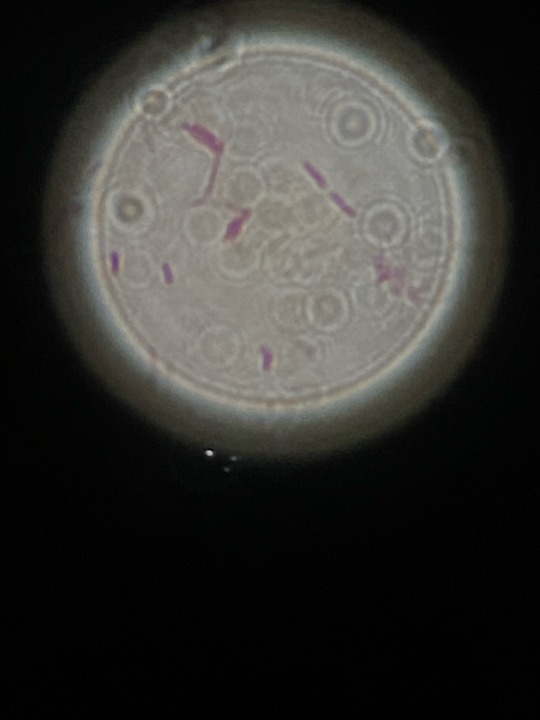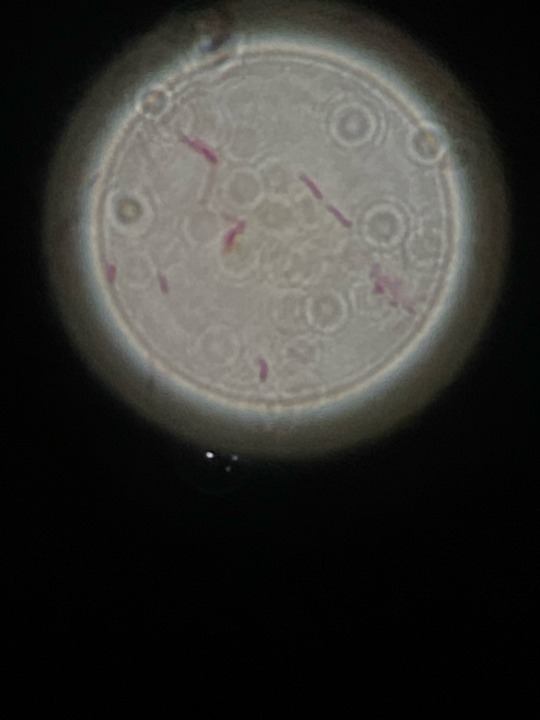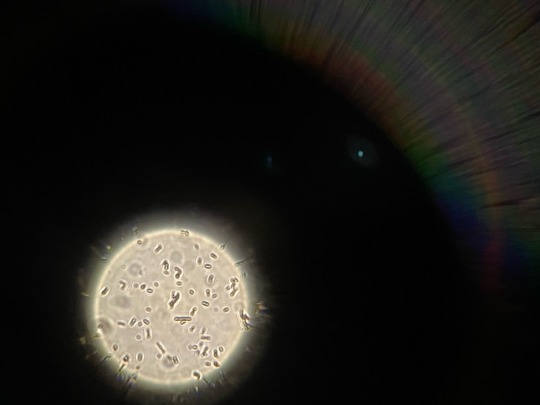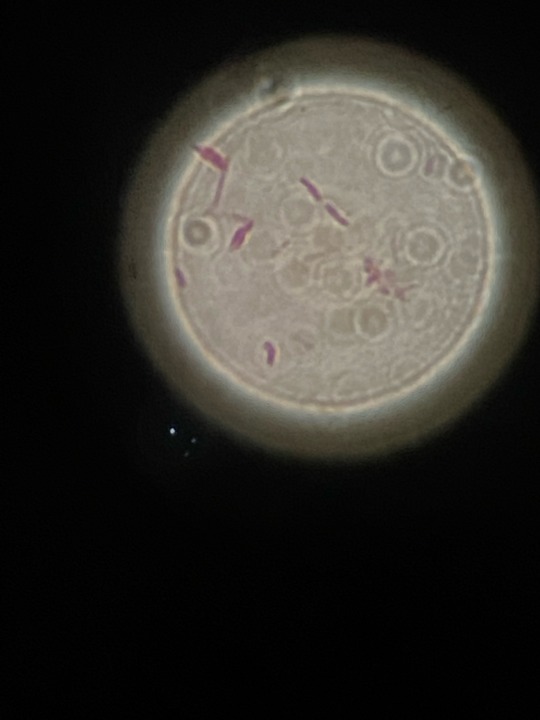#xld agar
Explore tagged Tumblr posts
Text
Check the Best Quality of XLD Agar (TM 492) at TM Media
If you are looking for XLD Agar (TM 492) (Xylose Lysine Deoxycholate) manufactured by TM Media, a brainchild of Taylor, stands tall in the realm of microbiology, heralded for its prowess in isolating and differentiating Enterobacteriaceae, notably Salmonella Typhi, from a milieu of pathogens. Crafted with precision, its formulation boasts superior selectivity and sensitivity, outshining conventional plating media like SS Agar and EMB Agar. Notably, XLD Agar's composition thwarts the proliferation of competing organisms, ensuring clarity in pathogen identification. Employed in diverse settings, from food to water analysis, its efficacy remains unrivaled, epitomizing reliability and accuracy in microbiological testing.
Visit the Website - https://www.tmmedia.in/

0 notes
Text
Get the Best Quality of XLD Agar (TM 492) at TM Media
If you are looking for Xylose Lysine Deoxycholate (XLD) Agar manufactured by TM Media is recommended for identifying Enterobacteriaceae and microbiological testing. Developed by Taylor, it isolates and differentiates enteric pathogens, emphasizing Salmonella Typhi. XLD Agar offers heightened selectivity and sensitivity compared to SS Agar, EMB Agar, and Bismuth Sulphite Agar. Its formulation prevents the overgrowth of other organisms, ensuring accurate detection of Salmonella and Shigella in samples suspected of containing enteric pathogens. Initial enrichment is carried out in Modified Semisolid RV Medium Base.
Visit the Website - https://www.tmmedia.in/

0 notes
Text
Understand the Spiderman of the Microverse: XLD Agar
Learning XLD’s X, Y, and Z can be challenging, but not with us. In the previous article, we discussed the various needs and applications of XLD (click on the link if you haven’t read it). In this, we’ll talk more about its composition, principle, observations, and modifications.
What is the composition of XLD Agar?
It was developed by Welton Taylor in 1965. XLD stands for Xylose Lysine Deoxycholate Agar and is a bright pink or red-colored solid opalescent gel medium. Knowing its key contents will help you better understand its principles and differentiating abilities.
Ingredients g/l
Yeast Extract 3 g
L-lysine 5 g
Xylose 3.75 g
Lactose 7.5 g
Sucrose 7.5 g
Sodium Deoxycholate 1 g
Sodium Chloride 5 g
Sodium Thiosulfate 6.8 g
Ferric Ammonium Citrate 0.8 g
Phenol red 0.08 g
Agar 12.5 g
Distilled water 1 Litre
Yeast extract provides the medium with nutrients, vitamins, peptides, and other essential growth factors. Xylose, lactose, and sucrose are rich sources of fermentable carbohydrates. For the detection of fermentation of these carbs in the medium, a pH indicator, phenol red, is added. The addition of xylose to the medium accounts for the differentiation of various fermenting enteric bacteria from species of Shigella that do not ferment it. Most enteric pathogens, including Salmonella,can ferment xylose, which results in the formation of acidic byproducts and a change in the color of the medium from pink to yellow, whereas Shigella colonies remain red. In some cases, Salmonella imitates Shigella colonies and gives red colonies, which are then differentiated by the production of Hydrogen sulfide gas by the metabolism of thiosulfate and give black centers. Enterobacteria such as E. coli can ferment lactose in the medium.
XLD Agar’s composition can be adjusted according to one’s needs and choices and is hence available in many different variations, but the basic principle remains the same.
Observation and Inferences on XLD Agar:
Observation Inferences
Red colonies, some with black centers Salmonella spp.
Red colonies Shigella spp.
Yellow to orange colonies Coliforms
Pink, flat, and rough colonies Pseudomonas aeruginosa

While learning about XLD Agar, a question that must have run through your thoughts would’ve been, “Where is XLD Agar available?” Let’s look into it.
Where is XLD Agar available?
XLD Agar is available on the market as Dehydrated Culture Media in a number of variations according to one’s requirements, including plant-based and animal-based options.
These Dehydrated Culture Media can be dissolved in distilled water according to the concentration mentioned on the package, autoclaved, poured, and used.
TM Media, the microbiology division of Titan Biotech Ltd., offers a wide range of XLD Agar as Dehydrated Culture Media in a number of variations suitable for all your needs, operations, and specific requirements.

The product range includes the following:
XLD AGAR MODIFIED (as per ISO) TM 1621: XLD Agar, modified, is a selective and differential medium for the isolation of gram-negative enteric pathogens from clinical specimens or food products. It is a modification of the original formulation of Taylor that allows selective isolation of Salmonella typhi, E. coli, Salmonella enteritidis, Salmonella typhimurium, and Shigella flexneri. It is recommended by the ISO committee, and the composition and performance criteria of this medium are as per the specifications laid down in ISO 6579-1:2017.
XLD AGAR (VEG.) TMV 492: Xylose Lysine Deoxycholate Agar (Veg) is prepared by replacing Sodium Deoxycholate with synthetic detergent No.III, which makes the medium free of BSE/TSE risks. Xylose Lysine Deoxycholate Agar (Veg) is suitable for the isolation and identification of enteric pathogens from stool samples.
XLD AGAR (as per USP/EP/JP/BP) TMH 112: This medium is employed for pharmaceutical testing and non-sterile product testing for the detection of Salmonella after enrichment in Rappaport VassialidiasSalmonella Enrichment Broth in accordance with the harmonized method of USP/EP/BP/JP/IP.
XLD AGAR TM 1448: It is used for pharmaceutical testing and nonsterile product testing for the detection (or absence) of Salmonella after enrichment in Rappaport Vassialidias Salmonella Enrichment Broth in accordance with IP.
XLD AGAR TM 492: XLD Agar exhibits increased selectivity and sensitivity as compared to other plating media, e.g., SS Agar, EMB Agar, and Bismuth Sulphite Agar. The media formulation does not allow the overgrowth of other organisms over Salmonella and Shigella. Samples suspected of containing enteric pathogens, along with other mixed flora, are initially enriched in Modified Semisolid RV Medium Base.
Why choose TM Media’s XLD Agar?
TM Media’s superior-quality and diverse Microbiological Culture Media are certified by ISO, CE, GMP, FSSAI, and FSSC.
TM Media provides unrivaled convenience, dependability, and efficacy, as well as versatility and flexibility, by manufacturing a contamination-free medium with a longer shelf life and reproducible outcomes.
Conclusion:
XLD Agar is a selective and differential agar medium primarily used for the isolation and differentiation of different enteropathogenic organisms that are well-known to cause diseases like Food poisoning, Gastroenteritis, and other Digestive illnesses.
By choosing TM Media, consumers invest in precision, quality, and excellence. TM Media's product portfolio includes over 2000 Dehydrated Culture Media, along with Ready-to-Use Culture Media, Biological Media Bases, Media Supplements, Lab Chemicals, and many more.
#XLD Agar#dehydrated culture media#food microbiology#clinical microbiology#Microbiology#Xylose Lysine Deoxycholate Agar
0 notes
Text
XLD Agar
XLD Agar Catalog number: B2017181 Lot number: Batch Dependent Expiration Date: Batch dependent Amount: 500 g Molecular Weight or Concentration: N/A Supplied as: Powder Applications: a molecular tool for various biochemical applications Storage: RT Keywords: Xylose Lysine Deoxycholate Agar Grade: Biotechnology grade. All products are highly pure. All solutions are made with Type I ultrapure water…
0 notes
Text
Get the Best Quality of XLD Agar at tm media
XLD Agar (Xylose Lysine Deoxycholate Agar) is a selective and differential medium used for isolating and identifying enteric pathogens, particularly Salmonella and Shigella species. The medium contains xylose, lysine, and deoxycholate to differentiate organisms based on their ability to ferment sugars and decarboxylate lysine. Phenol red serves as a pH indicator, facilitating the visual distinction of colonies. This agar is essential in clinical and food microbiology for accurate detection and differentiation of gastrointestinal pathogens.
Product link: https://www.tmmedia.in/product/xld-agar-2/ Website link: https://www.tmmedia.in/ Company Name: TM Media Phone: +91-9999-1687-70 Address: 905, 9th Floor, Big joes Tower, Netaji Subhash Place, New Delhi Mail:[email protected]

0 notes
Text
Check the Best Quality of XLD Agar(TM 492)at TM Media
XLD Agar, formulated by Taylor, is highly selective and sensitive for isolating enteric pathogens like Salmonella Typhi from various sources. Unlike SS Agar, EMB Agar, and Bismuth Sulphite Agar, XLD Agar prevents the overgrowth of non-target organisms, ensuring accurate identification. It is particularly effective for testing foods, water, and dairy products. Initial enrichment of samples in Modified Semisolid RV Medium Base enhances detection of enteric pathogens amidst mixed flora, making XLD Agar indispensable in microbiological testing.
Product link: https://www.tmmedia.in/product/xld-agar-2/ Website link: https://www.tmmedia.in/ Company Name: TM Media Phone: +91-9999-1687-70 Address: 905, 9th Floor, Big joes Tower, Netaji Subhash Place, New Delhi Mail:[email protected]

0 notes
Text
Construyendo teóricamente mi primer biorreactor (ciclo del azufre)
Introducción
La mayor parte del azufre de nuestro planeta, se encuentra en sedimentos y rocas en forma de minerales de sulfato, principalmente como yeso ( Ca SO4 ) y minerales de sulfuro (pirita,Fe S2), aunque el mar constituye el principal reservorio de sulfato de la biósfera. Una parte significativa de azufre particularmente el dióxido de azufre (SO2 gas ), se incorpora al ciclo de azufre mediante la actividad humana, sobre todo por combustión de combustibles fósiles.
El sulfuro de hidrógeno (HS- )o ( H2S ) es el principal gas volátil del azufre. Esta sustancia se forma principalmente por reducción bacteriana de sulfato
(SO42- +4H2 H2S +2 H2O + 2OH- ) o por las emisiones geoquímicas o por las emisiones geoquímicas de fuentes de sulfuro y volcanes. Aunque el( H2S ) es volátil, la forma de sulfuro presente en el ambiente depende del pH: por debajo de valores de pH 7 predomina el ( H2S ) y por encima de 7 predominan las formas no volátiles el ( SH-) y el (S2- ). En conjunto el ( H2S ), ( SH-) y el (S2- ) se denominan como sulfuros. El ( H2S ) es tóxico para muchas plantas y animales, cuando se combina con el hierro de los citocromos, bloquea la respiración, por lo cual el sulfuro es considerado tóxico. Su formación usualmente es a partir de la reducción de sulfato. La detoxificación en el ambiente del ( H2S ) se lleva a cabo mediante la reacción con compuestos de hierro, para formar (Fe S )pirrotina y ( FeS2 )pirita. El color negro de muchos sedimentos sulfúricos o de los cultivos de bacterias reductoras de sulfato se debe a estos minerales de sulfuros metálicos donde se produce sulfato reducción se debe a la acumulación de FeS.
Se realizó una búsqueda en el manual de Bergeys y se identificó a dos posibles cepas idóneas para la oxidación de sulfuro a sulfatos y al mismo tiempo se disminuya el PH.
Objetivo
Sabiendo que el (HS-) o ( H2S ) es tóxicos para muchas plantas y animales se Identificará una cepa bacteriana, que ayude a estabilizarlos bioquímicamente transformándolos en (SO42-), así como elevación y se puedan incorporar al suelo de los cultivos haciéndolos más productivos.
Método
Se encontraron dos cepas bacterianas, que ayudan a transformar a través de la oxidación el (SO42-) a ( H2S ), así como elevación de su PH.

Bioquímica (metabolismo del azufre)

Revisión taxonómica
Especies elegidas para construcción de biorreactor:



Método para elaborar un biorreactor que transforme de ( H2S ) a (SO42-) y eleve los niveles de PH
Se seleccionan dos bacterias Thiosphaera pantorropha y Thiobacillus ferrooxidans capaces de oxidar el sulfuro y transformarlo a sulfato, así como elevar PH.
Se aíslan 6 tubos bacteriológicos de cada cepa acorde a su medio de cultivo, en el caso de las Thiobacillus ferrooxidans se elige un medio de cultivo acuoso rico en arsénico y azufre para su crecimiento. Para la Thiosphaera pantorropha se usa un agua rica en azufre.
Se deja incubar a temperatura ambiente.
Posterior se elige un medio de cultivo:
Agar Xilosa Lisina Desoxicolato (XLD), revelan la formación de ácido sulfhídrico (H2S) por la precipitación de sulfuro de férrico (Fe2S3) de color negro presente en las colonias; el viraje es de color rojo púrpura alrededor de las colonias cuando existe un aumento de PH
Con las muestras de las cajas de Petri que cambiaron su viraje y dieron positivas a lo buscado, se aplica tinción gram y se hace una tabla de caracterización.

Identificar morfotipos (rasgos genotípicos para decidir qué línea se escoge de progenitores para hacer la conjugación).
Se deja incubar a temperatura ambiente y nuevamente se inoculan en los medios de cultivo previamente seleccionados.
Se hace una tabla de caracterización y se eligen las cepas que se van a poner a prueba.
Planificación de la prueba reto, donde se añada la bacteria a un medio controlado acuoso donde normalmente existen emisiones altas de ( H2S ) y un PH bajo.
Cuantificación de ( H2S ) y (SO42-) antes y después de comenzar la prueba.
Teniendo el (SO42-) que se utiliza para la elaboración de biofertilizantes , se ocupan en el suelo de los cultivos ayudando a su productividad.
Conclusión
Se encontraron dos cepas bacterianas, que ayudan a transformar a través de la oxidación el (SO42-) a ( H2S ), así como elevación de su PH.
Discusión de resultados
Se documentaron varios medios de cultivo, donde se pudiera medir la oxidación de ( H2S ) y que se transformara a (SO42-), sin embargo el más cercano que nos puede servir para este biorreactor es el Agar Xilosa Lisina Desoxicolato (XLD), aunque no es específica se eligió por que su viraje indica cuando elementos del azúfre bajan el PH cambiando su viraje de negro a rojo morado. Así mismo en la elección de cepas, se documentó de la bacteria paracoccus pantotrophus, que oxida de sulfuro y tiosulfuro y son reducidos a sulfato de azufre y este está formado por más de quince genes que codifican varios citocromos y otras proteínas necesarias para la oxidación directamente a sulfato de compuestos de azufre. Sin embargo a pesar de ser idónea, no se consideró ya que no se encontraba en el manual de Bergey´s.
Referencias
Chandra, T. S., & Friedrich, C. G. (1986). Tn5-induced mutations affecting sulfur-oxidizing ability (Sox) of Thiosphaera pantotropha. j bacteriol, 446–452.
de La Guarda, M. R. H. G. (2021). Análisis genómico de plásmidos de Acidithiobacillus ferrivorans PQ510 y Acidithiobacillus ferrooxidans PQ506 aislados de una zona minera de Cerro de Pasco. Universidad Nacional Mayor de San Marcos.
de Microbiología, I. V. (2012). Bacterias productoras de H2S: importancia en el deterioro de productos pesqueros y cárnicos - Cultivo cualitativo y cuantitativo; identificación molecular (PCR y Secuenciación). Instituto Valenciano de Microbiología.
García de la Guarda, R. H. (2021). Análisis genómico de plásmidos de Acidithiobacillus ferrivorans PQ510 y Acidithiobacillus ferrooxidans PQ506 aislados de una zona minera de Cerro de Pasco - Perú.
HACH. (2023). Prueba BART para bacterias reductoras de sulfato.
Holt, J. G., Krieg, N. R., Sneath, P. H. A., Staley, J. T., & Williams, S. T. (2000). Bergey´s Manual of DETERMINATIVE BACTERIOLOGY (Ninth Edition). Lipincoott wiliams & wilkins.
Lozano, L. C., Ramírez, L. C. C., & Ramírez, L. C. C. (2021). Las bacterias, su nutrición y crecimiento: una mirada desde la química. Nova, 19(36). https://doi.org/10.22490/24629448.5293
Madigan, M. T., Martinko, J. M., & Parker, J. (2004). Brock Biología de los Microorganísmos, 10a Edición. Pearson Prentice Hall.
Mittenhuber, G., Sonomoto, K., Egert, M., & Friedrich, C. G. (1991). Identification of the DNA region responsible for sulfur-oxidizing ability of Thiosphaera pantotropha. J Bacteriol ., 7340–7344.
R,M y Bartha, R. (2002). Atlas Ecología microbiana y Microbiología ambiental. Pearson Prentice Hall.
Universidad Miguel Hernández de Elche. (2013). Producción de sulfhídrico. Prácticas de Microbiología.
Wodara, C., Kostka, S., Egert, M., Kelly, D. P., & Friedrich, C. G. (1994). Identification and sequence analysis of the soxB gene essential for sulfur oxidation of Paracoccus denitrificans GB17. J Bacteriol, 6188–6191.
Anexo


Aunque son posibles varios estados de oxidación (Brock, 2008) refiere que solo tres estados de oxidación, tienen importancia en la naturaleza.
-2 (sulfidrilo, R-SH y sulfuro HS-)
0 ( azufre elemental, S°).
+6 (Sulfato, SO42-).
Sulfuro de hidrógeno y reducción a sulfato

1 note
·
View note
Text









Excuse my ugly face in the video lol
Today we had to find our “unknown” and find what it is and if it’s gram positive or gram negative. 
I first had to get the igniter outs as well as the Bunsen burner and my inoculating loop. I had to get my unknown broth which was number 13 (is also my lucky number and the day of my birthday as well), and dip my loop into the unknown broth tube. I then put the loop inside of the sample 13 tube, mixed it a bit then, put the mixture onto a clean slide in a circular motion. I then heat fixed it for 10 minutes and Gram stained it. Once gram stained, I was able to see I have a gram negative bacteria showing rods!
I also took the loop, Sanitized it with the Bunsen burner, and then put it back into the broth to put them on each of my Agar plates: EMB, MAC, & XLD.
On Wednesday we will see what grows on my plates whether it’s bacteria or fungi etc.
#working#sciences#science#science class#class#microbiology#microscopy#microscope#microbio#biology#biology class#biology major#biochemistry#biomed#biomedical#biomedical science#biomedical program#research#bacteria#bacterium#bacteriology#vet nurse#vet tech#future doctor#future veterinarian#veterinary medicine#vetmed life#vet med#vet med life#vetlife
11 notes
·
View notes
Text
XLD Agar: Composition, Principle, Uses- TM Media
XLD Agar was formulated by Taylor for the isolation and differentiation of enteric pathogens including Salmonella typhi from other Salmonella species. XLD Agar has been recommended for the identification of Enterobacteriaceae and for the microbiological testing of foods, water and dairy products. The media formulation does not allow the over growth of other organisms over Salmonella and Shigella. XLD Agar is one of the media used in the Microbial Limit Tests in the USP & EP.
PRINCIPLE
The medium contains Yeast extracts as source of vitamins and minerals. Addition of Sodium deoxycholate acts as a selective agent which is inhibitory to Gram-positive bacteria. It suppresses the growth of other enteric pathogens and enhances the growth of only few enteric bacilli. The medium contains Xylose as a fermentable carbohydrate which is utilized by Salmonella species. The medium pH is changed due to fermentation of Xylose which is detected by indicator Phenol red, thus the colony colour turns red. The medium also contains Lactose and Sucrose as the source of fermentable sugar. L-lysine is an essential amino acid source. Lysine is added to differentiate Salmonella Sp.Sodium chloride helps maintaining the osmotic balance of the cells. This medium also allows differentiation of bacilli based on their ability to produce H2S; it contains Sodium thiosulphate and Ferric ammonium citrate that helps visualizing the black centered colonies on production of hydrogen sulphide in the medium. Agar is added as the solidifying agent.
0 notes
Link
XLD Agar For selective isolation and enumeration of Salmonella typhi and other Salmonella species. XLD Agar was formulated by Taylor for the isolation and differentiation of enteric pathogens including Salmonella Typhi from other Salmonella species.
0 notes
Text
Get the Best Quality of XLD Agar Composition (TM 492) at TM Media
If you are looking for Xylose Lysine Deoxycholate (XLD) agar (TM 492) manufactured by TM Medium, a distinctive culture medium, boasts a specialized blend of ingredients carefully selected to facilitate the isolation and differentiation of enteric pathogens. Featuring xylose and lactose as fermentable carbohydrates, lysine and thiosulfate as vital sulfur sources, and deoxycholate acting as a potent selective agent against gram-positive organisms, xld agar composition stands out for its precision. Incorporated phenol red serves as a pH indicator, transitioning the medium to a discernible yellow hue upon acidification from carbohydrate fermentation. Additionally, the inclusion of ferric ammonium citrate and sodium thiosulfate facilitates hydrogen sulfide production, distinguished by the formation of characteristic black colonies.
Visit the Website - https://www.tmmedia.in/

0 notes
Text
Find the Top Quality of XLD Agar (TM 492) at TM Media
If you are looking for XLD Agar (Xylose Lysine Deoxycholate) manufactured by TM Media is a primary medium, selectively cultivating gram-negative Enterobacteriaceae like Salmonella and Shigella. Developed by Taylor in 1965, it is vital in various fields, including pharmaceutical and environmental testing. With an initial bright pink or red appearance, indicative of a neutral pH around 7.4-7.6, it leverages the fermentation properties of enteric bacteria, especially Salmonella, leading to medium acidification and a color change to yellow. Shigella, not fermenting xylose, remains red, facilitating their differentiation.
Visit Website - https://www.tmmedia.in/

0 notes
Text
Compare the recipes of Nutrient Agar and XLD Agar.If an organism can grow on both media, on which would you expect it to grow better? Why?
Compare the recipes of Nutrient Agar and XLD Agar.If an organism can grow on both media, on which would you expect it to grow better? Why?
Compare the recipes of Nutrient Agar and XLD Agar.If an organism can grow on both media, on which would you expect it to grow better? Why? XLD is a selective mediuam. Is it also a defined or an undefined medium? Why is that formulation desirabl 5 What would be the likely consequence of a. incubating the medium for 48 hours? b. not adding desoxycholate? c. not adding sucrose and lactose? d. not…

View On WordPress
0 notes
Text
300+ TOP MICROBIOLOGY of FOODS Objective Questions and Answers
MICROBIOLOGY of FOODS Multiple Choice Questions :-
1. Most spoilage bacteria grow at A. acidic pH B. alkaline pH C. neutral pH D. any of the pH Answer: C 2. The microbiological examination of coliform bacteria in foods preferably use A. MacConkey broth B. violet Red Bile agar C. eosine Methylene blue agar D. all of these Answer: D 3. Which of the following acid will have higher bacteriostatic effect at a given pH? A. Acetic acid B. Tartaric acid C. Citric acid D. Maleic acid Answer: A 4. Which of the following is not true for the thermal resistance of the bacterial cells? A. Cocci are usually more resistant than rods B. Higher the optimal and maximal temperatures for growth, higher the resistance C. Bacteria that clump considerably or form capsules are difficult to kill D. Cells low in lipid content are harder to kill than other cells Answer: D 5. Water activity can act as A. an intrinsic factor determining the likelihood of microbial proliferation B. a processing factor C. an extrinsic factor D. all of the above Answer: D 6. Enumeration of microorganism refers to A. either spiral plating, pour plate or spread plate of a food suspension on to a suitable selective agar, or non-selective plate, depending on the test B. either spiral plating, pour plate or spread plate of a food suspension on to a suitable selective agar C. non-selective plating, depending on the test D. none of the above Answer: A 7. The different ACC's between food categories reflect the A. expected level of contamination of the raw material B. potential for microbial growth during storage C. potential shelf life D. all of the above Answer: D 8. Examination of the presence / absence of organisms refers to A. incubation of a food suspension in an enrichment medium followed by inoculation on to a suitable selective medium. B. incubation of a food suspension in an enrichment medium followed by inoculation on to a non-selective medium. C. incubation of a food suspension in an enrichment medium D. none of the above Answer: A 9. Plate count of bacteria in foods generally use the plating medium consisting of A. peptone, yeast extract, glucose, sodium chloride, agar and distilled water B. yeast extract, glucose, sodium chloride, agar and distilled water C. peptone, glucose, sodium chloride, agar and distilled water D. peptone, yeast extract, glucose, sodium chloride and distilled water Answer: A 10. What are the intrinsic factors for the microbial growth? A. pH B. Moisture C. Oxidation-Reduction Potential D. All of these Answer: D

MICROBIOLOGY of FOODS MCQs MICROBIOLOGY of FOODS Objective Type Questions with Answers 11. Yeast and mould count determination requires- A. nutrient agar B. acidified potato glucose agar C. MacConkey agar D. violet Red Bile agar Answer: B 12. The time temperature combination for HTST paterurization of 71.1°C for 15 sec is selected on the basis of A. Coxiella Burnetii B. E. coli C. B. subtilis D. C. botulinum Answer: A 13. Aerobic Colony Count (ACC), is also known as A. Total viable count (TVC) B. Aerobic plate count (APC) C. Standard plate count (SPC) D. All of these Answer: D 14. Which of the following is true about ISO 2002 method for Salmonella detection? A. Selenite cystine (SC) broth is replaced by Muller Kauffmann tetrathionate novobiocin broth (MKTTn) B. Rappaport Vassiliadis (RV) broth has been replaced by Rappaport Vassiliadis Soya (RVS) broth C. XLD is the first isolation medium rather than BGA D. All of these Answer: D 15. Suspected colonies of Staphylococcus aureus when grown on Baird-Parker medium shall show A. coagulase activity B. protease activity C. catalase activity D. none of these Answer: A 16. A psychrophilic halophile would be a microbe that prefers A. cold temperatures and increased amounts of salt B. warm temperatures and increased amounts of pressure C. cold temperatures and the absence of oxygen D. warm temperatures and increased amounts of acid Answer: A 17. NaCl can act as A. antagonist at optimal concentrations B. synergistically if added in excess of optimum level C. Both (a) and (b) D. None of the above Answer: C MICROBIOLOGY of FOODS Questions and Answers pdf Download Read the full article
0 notes
Text
Buy now the Best Quality of XLD Agar at TM Media
XLD Agar, or Xylose Lysine Deoxycholate Agar, is a selective and differential medium used in microbiology for the isolation and differentiation of enteric bacteria, particularly Salmonella and Shigella species. Its composition includes xylose as a fermentable sugar, lysine as a pH indicator, and deoxycholate as a selective agent. XLD Agar inhibits the growth of Gram-positive bacteria while allowing the growth of Gram-negative bacteria. It produces characteristic colony colors aiding in the identification of pathogens, making it valuable in clinical and food testing laboratories.
Product link: https://www.tmmedia.in/product/xld-agar-2/ Website link: https://www.tmmedia.in/ Company Name: TM Media Phone: +91-9999-1687-70 Address: 905, 9th Floor, Big joes Tower, Netaji Subhash Place, New Delhi Mail:[email protected]

0 notes
Photo

Salmonella linked to ground beef – msnNOW A multistate salmonella outbreak has sickened 10 people and caused one death, according to the US Centers for Disease Control and Prevention. The outbreak is believed to be connected to ground beef. © CDC After 24 hours, this inoculated XLD agar culture pl… Read More
0 notes